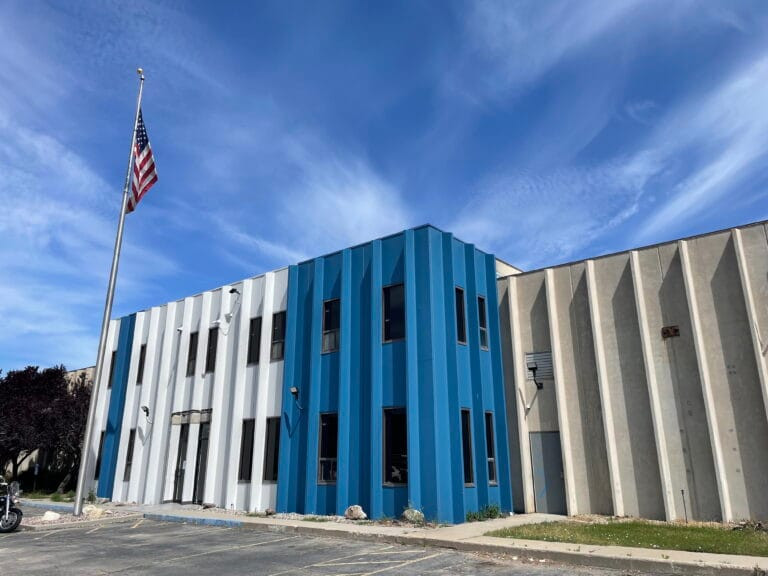- Scalable and resilient production with a globally distributed CJ1 facility producing 30,000 gallons of advanced fuels annually by early 2026 and a blueprint for expansion to 100 million gallons per site while mitigating supply chain risks and maintaining fuel quality
- High-performance sustainable fuels with CycloSAF and CycloRP offering 10 percent and 4 percent higher energy density than conventional fuels, fully compatible as drop-in replacements, and using abundant biomass feedstocks to reduce emissions without competing with food production
- Market readiness and strategic partnerships with completion of ASTM D4054 qualification for commercial use, 90 million gallons of offtake agreements, and successful testing for aviation and rocket propulsion applications supporting net-zero goals while maintaining efficiency and reliability
The aviation industry faces mounting pressure to cut carbon emissions while maintaining safety, performance, and operational efficiency. Alternative aviation fuels have emerged as a key solution, but many existing options come with limitations—whether in blend ratios, energy density, or supply scalability.
Recent advances in fuel technology are shifting that narrative. New fuel formulations offer higher energy density, improved performance, and compatibility with current aircraft, enabling airlines to reduce emissions without sacrificing range or payload. These breakthroughs also support a more resilient and distributed production network, addressing critical supply chain challenges.
As the industry moves towards net-zero goals, the race is on to develop sustainable fuels that can be produced at scale, delivered reliably, and adopted seamlessly. Understanding these innovations is vital to grasp how aviation can balance growth with environmental responsibility in the coming decades.
The facility spans six acres and is intentionally designed as a scalable blueprint for future sites globally. It aims to produce 30,000 gallons of advanced fuels annually by early 2026, with engineering that supports expansion to a 100 million gallon commercial-scale facility. Mukund Karanjikar, CEO and founder of CleanJoule highlighted that “the key aspects are process integration and balance of plant, which once demonstrated, allow known scale-up engineering to take place.”
This approach differs from simply expanding one plant; instead, CleanJoule plans to replicate the CJ1 blueprint across multiple facilities worldwide. “Our goal is a globally-distributed, resilient fuel infrastructure network,” Karanjikar states. The repeatable manufacturing protocols and standardised operational procedures create a solid foundation for scaling without compromising quality or efficiency.
Crucially, this model addresses a persistent challenge in the alternative aviation fuel industry: securing enough supply to meet demand while maintaining consistent fuel quality. By enabling multiple plants in diverse geographies, CleanJoule’s strategy mitigates risks linked to supply chain disruptions and regional feedstock shortages.
Advanced fuel formulations
CleanJoule’s innovation isn’t just about scaling production—it’s also about redefining what sustainable aviation fuel can deliver in terms of performance. Their two formulations, CycloSAF and CycloRP, offer markedly different advantages over traditional SAF.
“CycloSAF is 10 percent more energy dense than typical Jet A or Jet A-1,” Karanjikar notes. “This translates into greater range, higher payload capacity, or improved fuel efficiency.” Unlike many alternative aviation fuels limited to 50 percent blending with conventional jet fuel, CycloSAF is designed to be a 100 percent drop-in replacement. “That means no engine modifications are needed, which makes adoption far easier for airlines,” he adds.
CycloRP, meanwhile, targets aerospace applications, particularly rocket propulsion. “It delivers over four percent improvement in energy density compared to conventional kerosene fuels used in liquid rockets,” Karanjikar says. “It also offers superior ultra-cold flow properties, which is critical for space missions.”
Both fuels are produced from abundant biomass, primarily waste agricultural materials, using CleanJoule’s proprietary manufacturing process. This feedstock flexibility and focus on waste not only reduce carbon emissions but also address concerns over land use and food competition that often accompany biofuel production.
“Our process has been successfully proven on 11 different feedstocks,” Karanjikar points out. “This flexibility allows scaling anywhere, tapping into existing agricultural supply chains without requiring new land dedication.” In the U.S., for example, declining ethanol demand frees up billions of bushels of corn, creating abundant feedstock for alternative aviation fuels production by 2030.
Certification, partnerships and readiness
Reaching market scale depends not only on production but also regulatory certification and partnerships. CleanJoule is nearing the end of the ASTM International D4054 qualification process, a key step for commercial approval.
“All required testing for a 10 percent blend of CycloSAF with Jet A has shown that it meets and even improves upon Jet A’s performance,” Karanjikar reports. “We expect qualification by the end of 2025, which will open the door for commercial use.” The CJ1 commissioning validated the facility’s readiness to produce these fuels at industrial scale, aligning technical and economic viability.
Moreover, CleanJoule has already secured significant offtake agreements. “Our airline investors have signed 90 million gallons of offtake from our next facility, CJ2, which is soon to be commissioned,” Karanjikar reveals.
Collaborations extend beyond commercial aviation, with CleanJoule recently powering a rotating detonation rocket engine (RDRE) using CycloRP in partnership with Venus Aerospace. “This test demonstrated the versatility of our fuels, proving they can power both conventional and advanced propulsion systems without compromising performance,” he explains. This opens opportunities in defence and spaceflight, broadening the impact of sustainable fuels.
Addressing the industry’s challenges
The broader aviation industry is grappling with tightening regulations and aggressive net-zero commitments. Yet many current alternative aviation fuels options face “blend walls” limiting their use to 50 percent blends and suffer from lower energy densities compared to fossil fuels.
CleanJoule aims to overcome these limitations. “Our fuels are designed not just to be cleaner but better-performing,” Karanjikar emphasises. “This allows airlines to meet climate goals without operational trade-offs.” The company’s distributed manufacturing also supports energy independence and supply chain resilience, vital considerations amid geopolitical and market volatility.
He adds, “We see advanced fuels as one of the most practical and immediate ways to reduce emissions across aerospace—from today’s commercial flights to future space missions.” By offering drop-in solutions that require no engine changes, CleanJoule is lowering barriers for industry-wide adoption.




